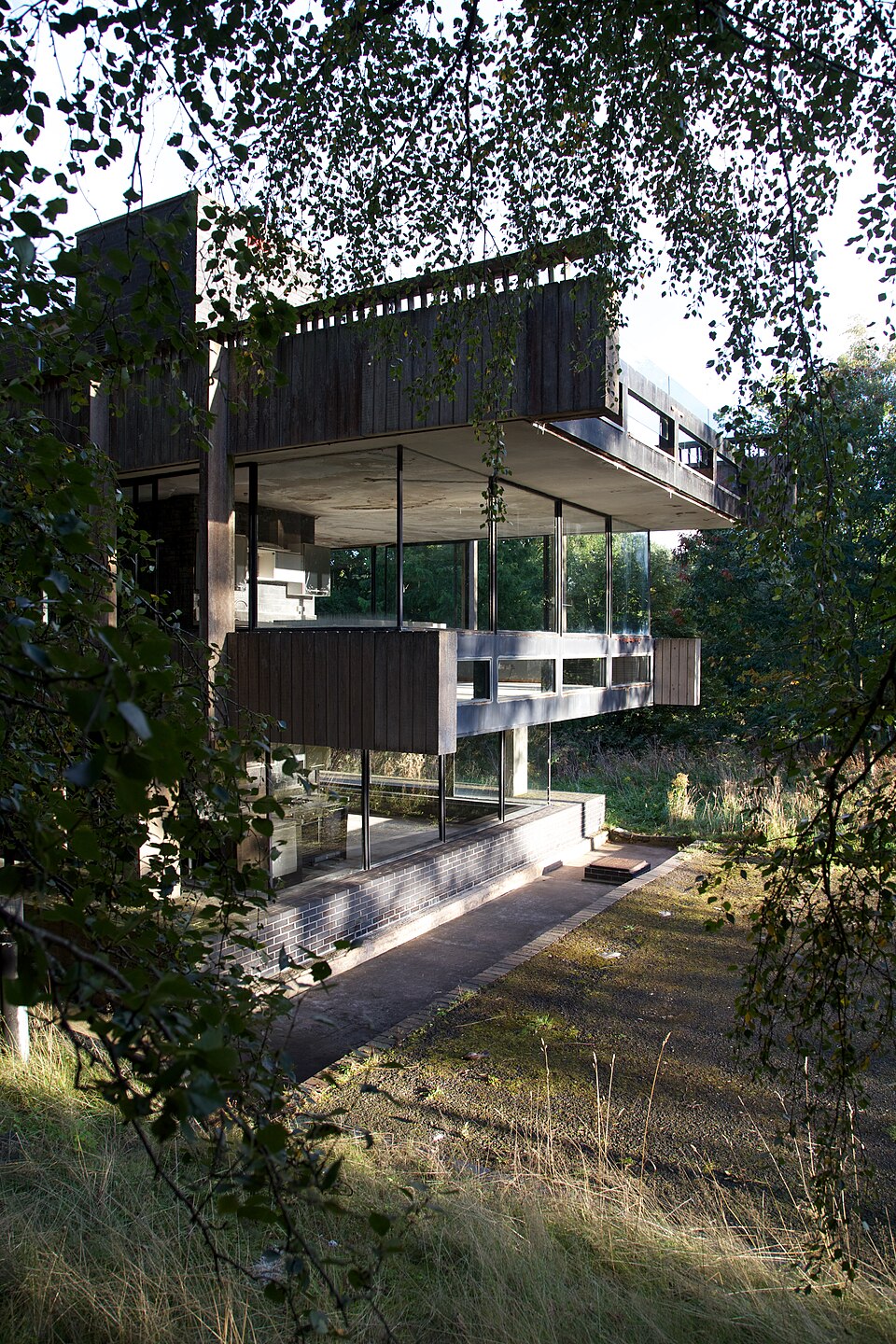Historic A-Listed Brutalist Studio of Textile Designer Bernat Klein for Sale

The dilapidated studio of renowned textile designer Bernat Klein is set to be auctioned with a guide price of £18,000. Located near Selkirk in the Scottish Borders, the studio was constructed in 1972 and is recognized as a category A-listed building, highlighting its significance as a fine example of late modernist architecture.
Designed by Peter Womersley, who is celebrated as one of Scotland's foremost brutalist architects, the two-storey concrete and brick structure served as a workspace for Klein's design, weaving, and showcasing textiles. Klein, who passed away in 2014, was known for his collaborations with major fashion houses, including Dior, creating some of the most exquisite textiles of the 20th century.
The studio’s design is noted for its harmonious integration into the surrounding landscape, with Historic Environment Scotland (HES) describing it as a "very fine sculptural late Modernist building." The structure features severe horizontality that contrasts with the vertical elements of the adjacent wooded area, a characteristic that embodies Womersley's architectural ethos.
Despite its architectural merit, the studio has suffered from neglect over the past 20 years. According to Savills, the property is in need of modernization but retains significant potential for future development, contingent upon obtaining the necessary consents. Savills emphasizes that the studio remains "a masterpiece of structural elegance integrated into its wooded landscape."
Peter Womersley, the architect behind the studio, has several notable works, including the Netherdale stadium for Gala Fairydean FC and parts of Edinburgh's Western General Hospital. His architectural legacy continues to be recognized in the region, with ongoing discussions about the preservation and revitalization of his buildings.
The auction of Klein's studio not only signals a potential new chapter for this significant piece of architectural history but also raises questions about how such structures can be preserved amidst modern development pressures. As interest in brutalist architecture grows, the sale of this studio could reinvigorate conversations about the importance of protecting such unique designs that contribute to Scotland's architectural heritage.
In conclusion, the upcoming auction of Bernat Klein's studio represents not only a chance to acquire a piece of unique architectural history but also an opportunity to explore the future of historic preservation in Scotland. The significance of such structures in terms of cultural and architectural identity cannot be overstated, and the outcome of this sale may influence similar cases in the region.
Advertisement
Tags
Advertisement





